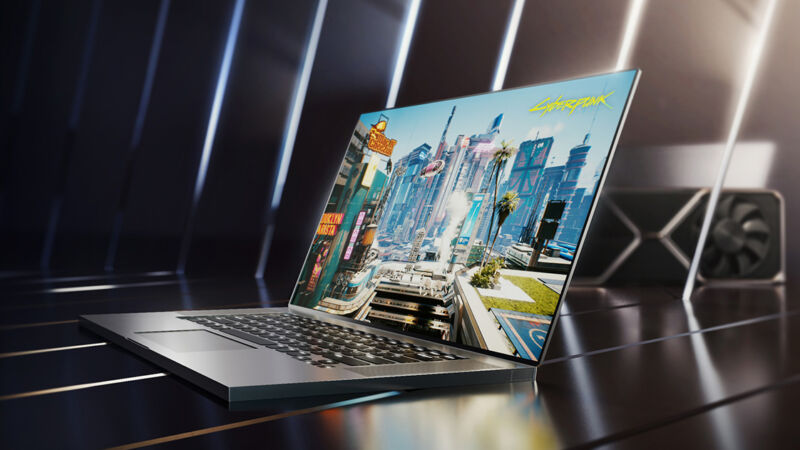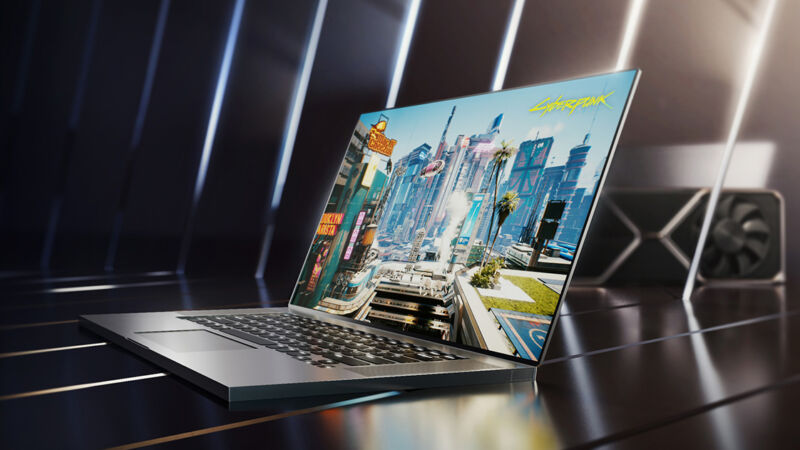
Nvidia has added entry-level GPUs to the RTX 30 laptop line: the GeForce RTX 3050 Ti and 3050. Nvidia says the chips will be available “this summer” in laptops starting at $799.
Like everything else in the RTX 30 line, these cards are based on the Ampere architecture and are capable of ray tracing and the Nvidia’s proprietary DLSS upscaling tech. As you can probably guess from the name, these slot in below the existing RTX 3060 GPU with cuts across the board. You can dive into Nvidia’s comparison table, below, but the short version is that these cheaper GPUs have less memory (4GB) and fewer CUDA, Tensor, and ray-tracing cores.

Nvidia’s comparison of its laptop GPU lineup. (credit: Nvidia)
DLSS in an entry-level laptop should be interesting. Nvidia’s “Deep Learning Super Sampling” has your GPU render a game at lower resolution and the the DLSS AI upscales it to a higher resolution, letting you hit a higher frame rate than you normally would at a native resolution. If you’ve never tried it, it sounds like AI hocus-pocus, but it actually works—you just need the right Nvidia card (these ones) and a game that supports it. On a laptop, which is by definition not going to be the fastest computer on Earth, anything that helps boost gaming performance without sacrificing much quality is welcome.





